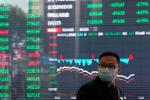
- All Instrument Types
- Indices
- Equities
- ETFs
- Funds
- Commodities
- Currencies
- Crypto
- Bonds
- Certificates
Please try another search

The last time Draghi promised to do whatever it takes (the summer of 2012), he did nothing, but brought about the biggest market reaction ever for a non-event (the decline in peripheral yields). This time, although he never made the same promise, he built up expectations to such an extent that the market impact has been relatively muted, certainly when compared back to 2012 or the reaction to the Bank of Japan’s bazooka early last year.
Leaving aside the finer details, there were four aspects to the policy changes today. As well as rates, the ECB announced targeted longer term repo operations, the total banks are allowed to borrow being linked to their overall lending. Thirdly, the ECB are looking at asset backed securities program.
Finally, together with other amendments to liquidity arrangement, the Bank will no longer sterilise purchases from within its Securities Market Program. They were struggling to do this anyway week by week, so this is in effect authorising what has already been taking place.
The ECB themselves admitted that have reached the lower bound on rates, removing the reference to lower rates in their forward guidance that was introduced nearly a year ago into their statement. There are two considerations; what will be the impact on the real economy and the other is the impact on the currency.
With regards to the economy, what matters is interest rates paid by households and businesses. These generally crept higher last year even though rates were cut because banks were repaying loans back to the ECB and reducing the overall levels of liquidity they held, putting mild upward pressure on lending rates.
The success of other lending programs that have been seen in other countries (such as UK Funding for Lending scheme) has been limited overall. And the impact of negative rates should not be over-played. They only matter if banks are paying these negative rates and the proportion doing so has fallen by 80% over the past year. It is designed to act as an incentive for banks to lend money out in the market, rather than park it at the ECB.
In sum, the actual impact is not going to be major and the key will be to watch market and commercial/retail rates in the coming weeks. For the currency, we’ve seen some recovery from the lows, which has meant that the net reaction has been modest.
In the bigger picture, it is asset market performance that matters more for the currency, given the changes in rates are going to be marginal at best. The relative outperformance of bonds and equities has moderated of late, so this may struggle to be sustained.
Bottom line, EUR/USD is not going to fall out of bed as a result of today’s measure and the real economy impact is going to be muted, so the deflationary threat remains real and present.





